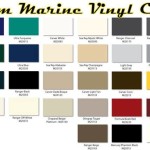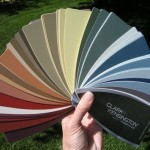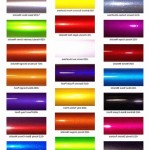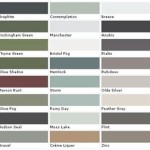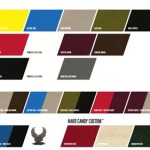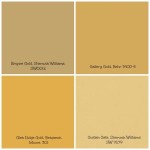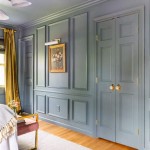How to Choose the Right Stone-Colored Paint for Your Home Interior
Stone-colored paint has emerged as a popular choice for interior design, offering versatility and timeless appeal. The selection of the correct shade and undertone, however, is critical to achieving the desired aesthetic. Making an informed decision involves understanding the nuances of stone colors, considering the existing elements within the space, and testing potential options under different lighting conditions.
Stone colors occupy a broad spectrum, ranging from light creams and beiges resembling limestone to deep grays and charcoals evocative of slate or granite. Ultimately, successful integration depends on a strategic approach that accounts for various factors within the home environment. This article will explore the key considerations in selecting the right stone-colored paint for interior spaces.
Understanding the Nuances of Stone Colors
The term "stone color" encompasses a wide range of neutral hues, each with its own distinct character. Before delving into specific shades, it is essential to understand the defining characteristics that differentiate one stone color from another. This includes exploring the concepts of undertones, color temperature, and light reflectance value (LRV).
Undertones are subtle hues beneath the surface color that influence its overall appearance. Stone colors can have warm undertones (yellow, red, or brown) or cool undertones (blue, green, or gray). Identifying the undertone is crucial because it affects how the paint interacts with other colors in the room. For instance, a stone color with a yellow undertone will create a warmer, more inviting atmosphere, while one with a blue undertone will project a cooler, more sophisticated feel. A mismatch in undertones can result in a space that feels disjointed or unbalanced.
Color temperature, closely related to undertones, describes whether a color is perceived as warm or cool. Warm stone colors, with their yellow or reddish undertones, tend to create a cozy and comforting environment. These colors are often suitable for living rooms, bedrooms, and other spaces where a sense of relaxation is desired. Conversely, cool stone colors, characterized by their blue or greenish undertones, evoke a sense of calmness and serenity. They are often used in bathrooms, home offices, and other spaces where focus and clarity are important.
Light Reflectance Value (LRV) measures the percentage of light a paint color reflects. LRV ranges from 0 to 100, with 0 representing pure black and 100 representing pure white. Stone colors typically fall within the middle range of the LRV scale. A higher LRV indicates that the color will reflect more light, making a room appear brighter and more spacious. This is particularly important in smaller spaces or rooms with limited natural light. A lower LRV indicates that the color will absorb more light, creating a more intimate and dramatic atmosphere. Careful consideration of LRV is paramount to achieve the desired level of brightness and spaciousness in a given interior.
Beyond these fundamental aspects, the texture and finish of the paint also contribute to the overall impact of the stone color. Matte finishes absorb light, creating a soft and muted appearance, while glossier finishes reflect light, enhancing the color's vibrancy and adding a touch of elegance. The choice of finish should be determined by the specific application and the desired aesthetic.
Considering Existing Elements and Room Function
The successful integration of stone-colored paint hinges upon its compatibility with existing architectural features, furnishings, and decorative elements. Careful consideration should be given to the colors and materials already present in the space. This includes assessing the flooring, furniture upholstery, window treatments, and any accent pieces that will remain upon completion of the painting project. A cohesive color palette is achieved through strategic coordination of textures, and existing colors already present in the room.
Flooring materials, in particular, play a significant role in determining the optimal stone color for walls. Warm-toned wood floors often complement stone colors with warm undertones, creating a cohesive and inviting atmosphere. Conversely, cool-toned tile or concrete floors may pair better with stone colors with cool undertones, resulting in a more contemporary and sophisticated look. The color of the flooring can either harmonize with or contrast against the wall color, depending on the designer's intention. Contrast can create a dynamic, visually stimulating space, while harmony fosters a sense of tranquility and unity.
The function of the room also influences the choice of stone color. For example, light and airy stone colors with high LRVs are well-suited for living rooms and kitchens, promoting a sense of spaciousness and sociability. Deeper, more saturated stone colors can be used in bedrooms to create a cozy and relaxing atmosphere. In home offices, cool, neutral stone colors can help to promote concentration and focus. The intended purpose of the room significantly affects the selection of the stone color, as well as its undertone and lightness.
Furthermore, the amount of natural light a room receives should be a primary consideration. Rooms with ample natural light can accommodate a wider range of stone colors, including darker shades. However, rooms with limited natural light benefit from lighter stone colors with high LRVs to maximize brightness. In spaces where natural light is scarce, strategic use of artificial lighting can also compensate for the lack of natural illumination.
The selection of complementary colors for trim, doors, and accent walls is also important. A classic approach is to use a lighter shade of the same stone color for trim and doors, creating a subtle and sophisticated contrast. Alternatively, a contrasting color can be used to add visual interest and highlight architectural details. The choice of accent colors should be carefully considered to ensure that they complement the stone color and the overall design scheme. A trial and error method may be used to determine the proper colors to use as an accent to the existing stone colors.
Testing Potential Colors and Lighting Conditions
Before committing to a specific stone color, it is highly recommended to test potential options in the actual space. This involves purchasing paint samples and applying them to various areas of the walls. The samples should be large enough to provide an accurate representation of the color, typically at least 12 inches by 12 inches. Observing the samples under varying lighting conditions throughout the day is essential to accurately assess how the color will appear at different times. The appearance of paint colors can change dramatically depending on the source and intensity of light.
Natural light, artificial light, and ambient light can all affect the perceived color of paint. Natural light is often the most flattering, revealing the true undertones and subtleties of the color. Artificial light, such as incandescent, fluorescent, or LED, can cast different hues that alter the way the color appears. Incandescent light tends to warm up colors, while fluorescent light can make them appear cooler or more sterile. LED lighting comes in a variety of color temperatures, so it is important to choose bulbs that accurately render the paint color. Ambient light, which is the general level of illumination in a room, can also influence the perceived color. A room with low ambient light may make a color appear darker, whereas a room with high ambient light may make it appear lighter.
It is advisable to paint the test samples on multiple walls, as the color may look different depending on the wall's orientation and exposure to light. Walls that face north typically receive cooler, more diffused light, while walls that face south receive warmer, more direct light. The surrounding colors and textures in the room can also affect the way the paint color appears. For example, a dark carpet may make a light stone color appear even lighter, while a brightly colored piece of furniture may distract from the subtle nuances of the paint color.
Observe the paint samples at different times of day, including morning, afternoon, and evening, to see how the color changes under different lighting conditions. Pay particular attention to how the color appears under artificial light, as this is often the light that will be used most frequently in the evening. If possible, test the samples with different types of light bulbs to see which ones render the color most accurately. The results obtained under different lighting conditions will help in reaching an informed decision.
Once the paint samples have been thoroughly evaluated, it is time to make a final decision. Consider all of the factors discussed above, including the undertones, LRV, existing elements, room function, and lighting conditions. Select the stone color that best complements the space and creates the desired atmosphere. This iterative process, incorporating testing and evaluation, is crucial for ensuring satisfaction with the finished results.

The 12 Best Whole Home Gray Greige Paint Colors Kylie M Interiors

How To Choose Right Textured Paint Finish For Your Homes

Beige Vs Gray Paint Uses Effects Cost More

How To Decorate With Beige Gray Or Warm Cool Kylie M Interiors

The 18 Best Paint Colors For East Facing Rooms Kylie M Interiors

How To Choose The Perfect White Paint Color Edition Noire

The Best Light Gray Paint Colors For Walls

51 Neutral Paint Colors Interior Designers Actually Use

Bright Paint Color Ideas To Consider Forbes Home

55 Best Living Room Paint Colors From Designers
Related Posts

